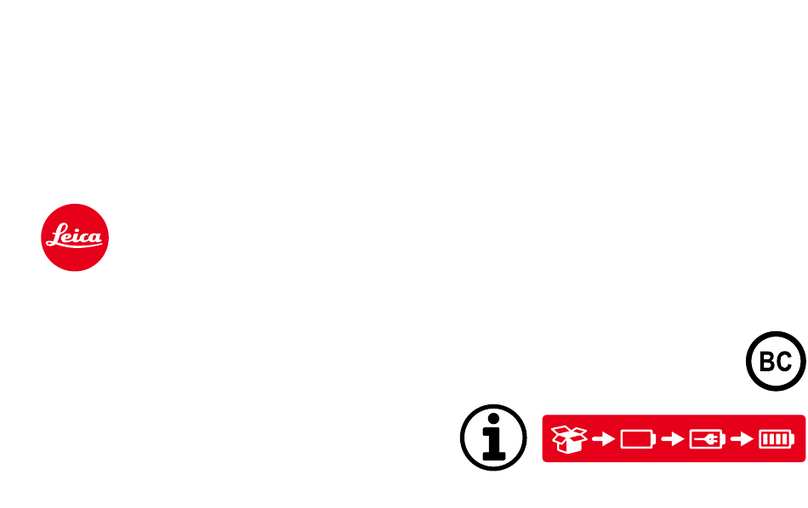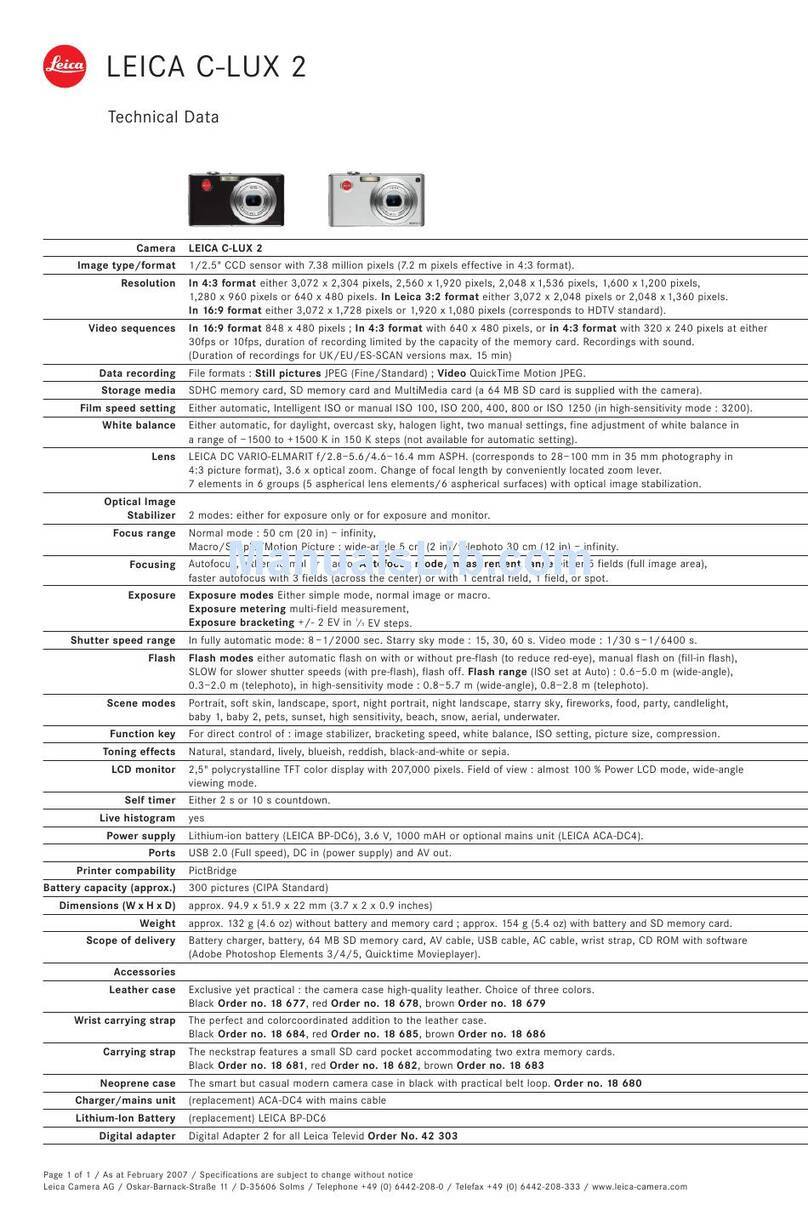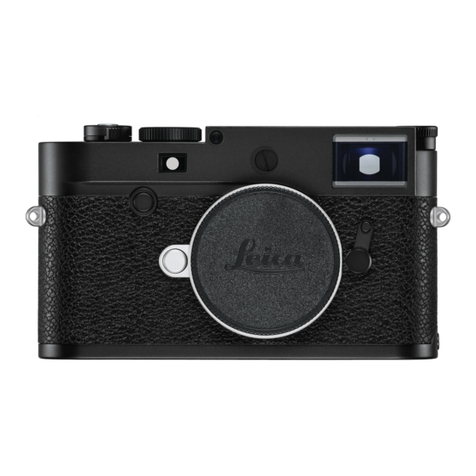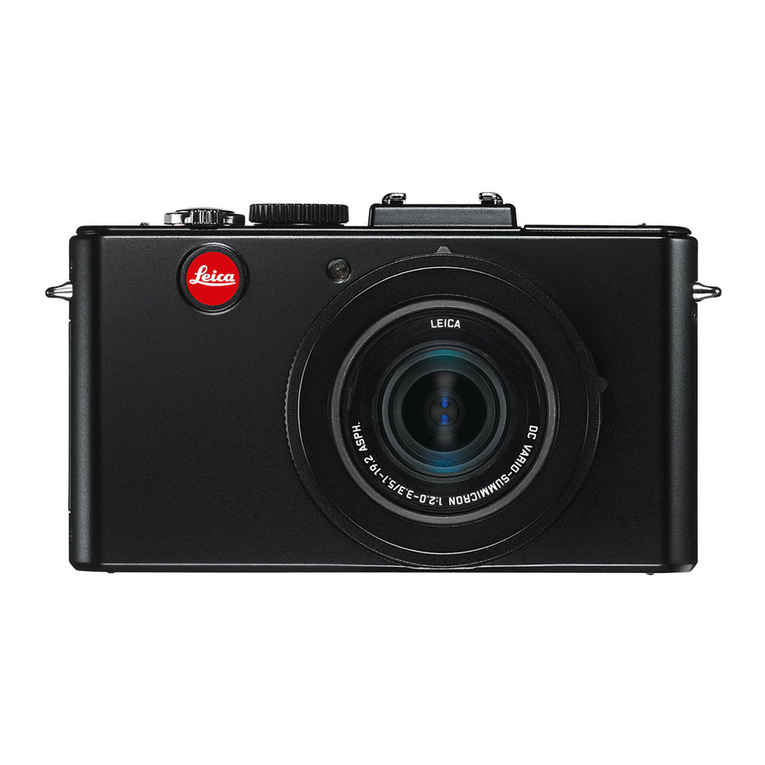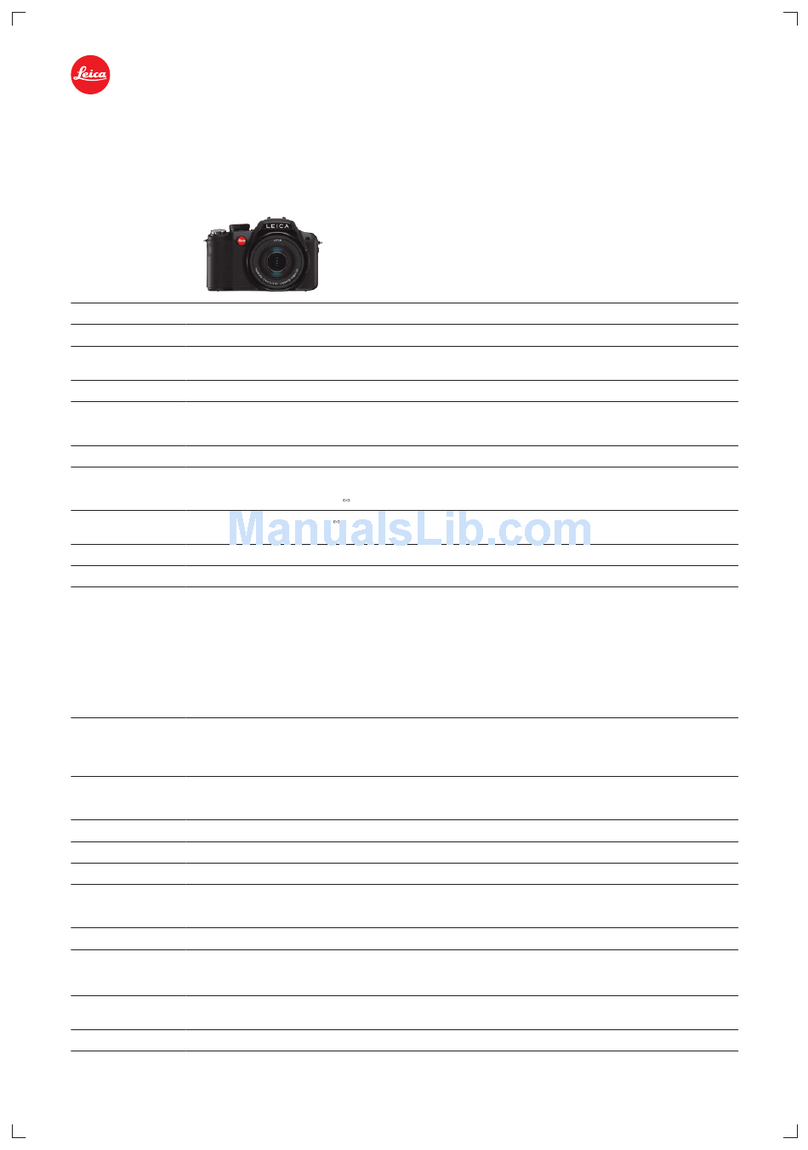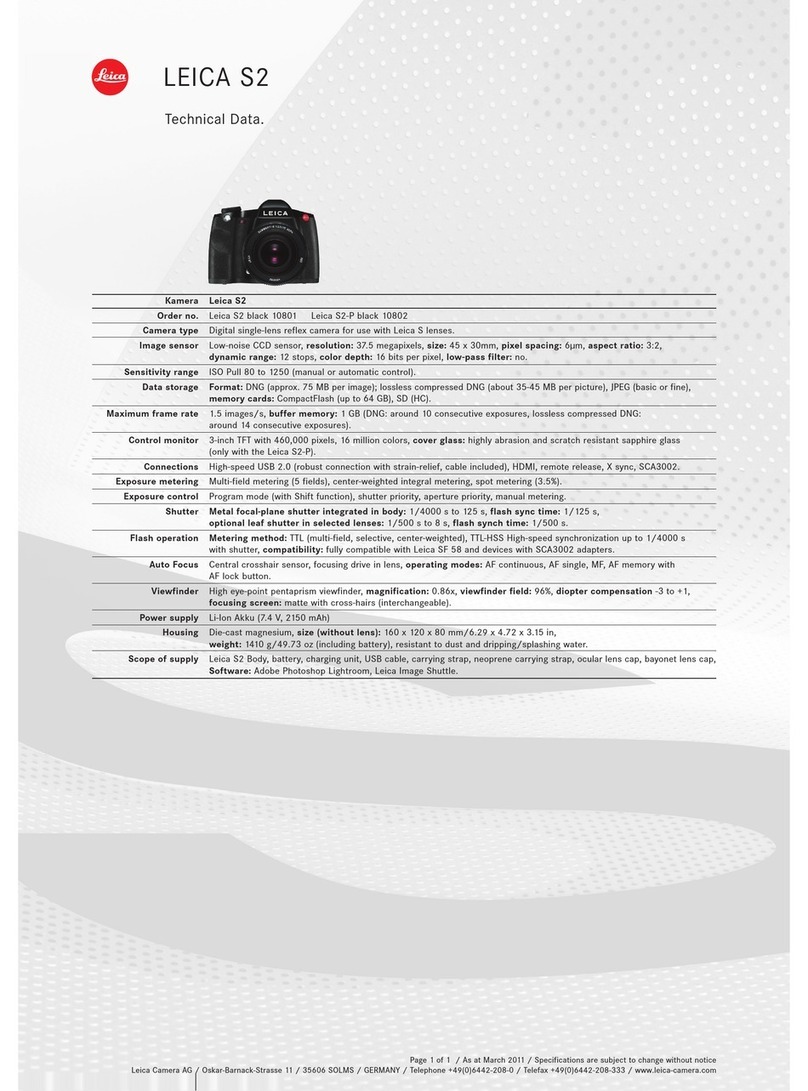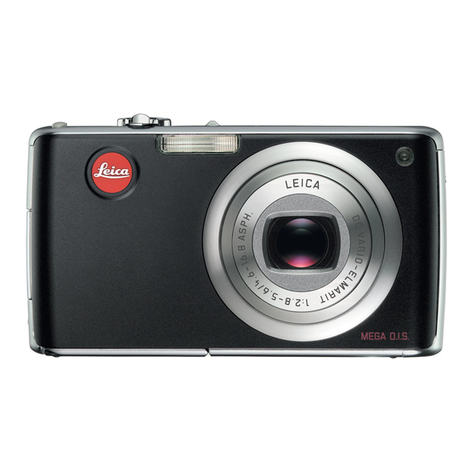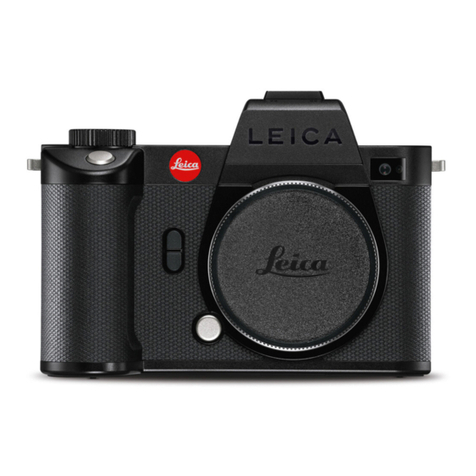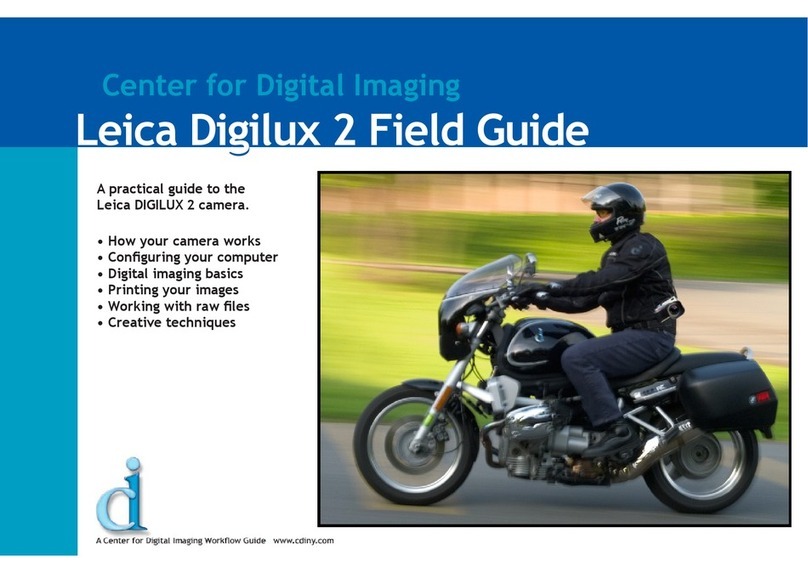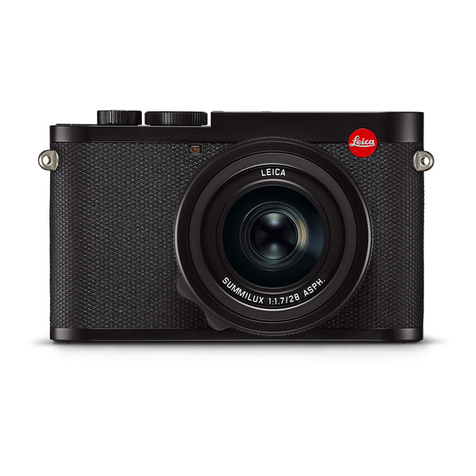
EN
99
Warning messages / Legal information
The CE identification of our products documents compliance
with the fundamental requirements of the valid EU directives.
WARNING MESSAGES
• Modern electronic elements react sensitively to electrostatic
discharge. As you can easily pick up charges of tens of thousands
of volts, by walking on synthetic carpets for example, a discharge
can occur when you touch your camera, particularly if it is placed
on a conductive surface. If only the camera housing is affected,
this discharge is harmless to the electronics. However, despite
built-in safety circuits, outer contacts should not be touched if at
all possible for safety reasons.
• For any cleaning of the contacts, do not use an optical micro-fiber
cloth (synthetic); use a cotton or linen cloth instead. Before
touching the contacts, you can make sure you discharge any
electrostatic charge by deliberately touching a heating or water
pipe (conductive, earthed material). You can also avoid any soiling
and oxidation by storing your camera in a dry location with the lens
cap and flash shoe / viewfinder socket cap attached.
• You should use only the recommended accessories to prevent
faults, short circuits or electric shock.
• Do not attempt to remove parts of the body (covers); specialist
repairs can be carried out only at authorized service centers.
LEGAL INFORMATION
• Please ensure that you observe copyright laws. The recording and
publication of pre-recorded media such as tapes, CDs, or other
published or broadcast material may contravene copyright laws.
• This also applies to all of the software supplied.
• The SD, HDMI, and USB logos are registered trademarks.
• Other names, company or product names referred to in these
instructions are trademarks or registered trademarks of the
relevant companies.
DISPOSAL OF ELECTRICAL AND
ELECTRONIC EQUIPMENT
(Applies within the EU, and for other European countries
with segregated waste collection systems)
This device contains electrical and/or electronic components and
should therefore not be disposed of in general household waste.
Instead it should be disposed of at a recycling collection point
provided by the local authority. This costs you nothing. If the device
itself contains replaceable (rechargeable) batteries, these must be
removed first and, if necessary, also be disposed of in line with the
relevant regulations.
You local authority or waste disposal authority, or the shop where you
bought this device, can provide you with further information on this
issue.
